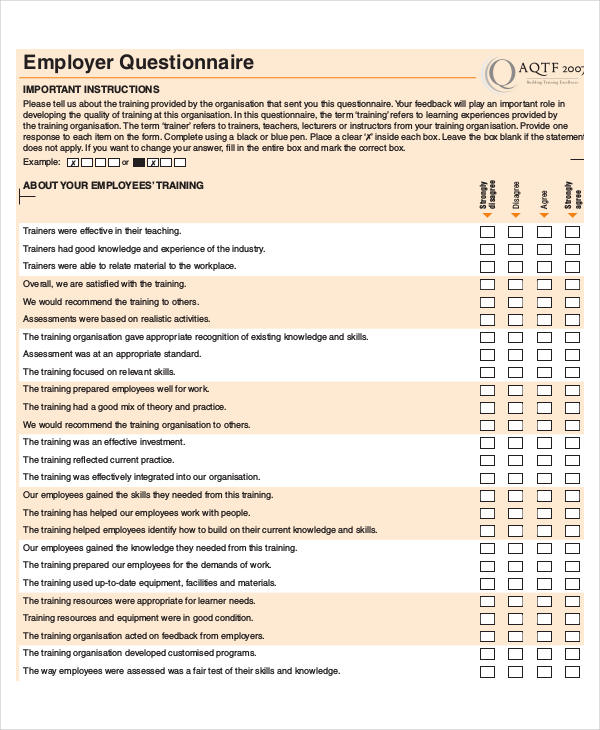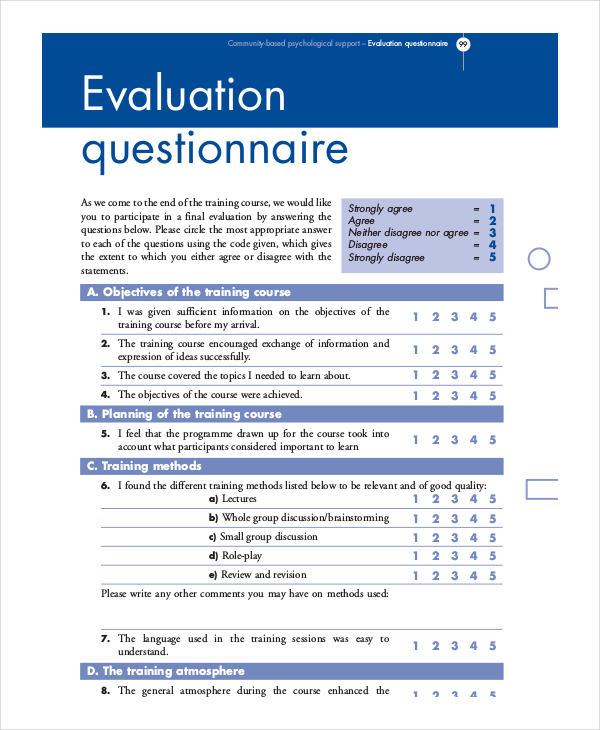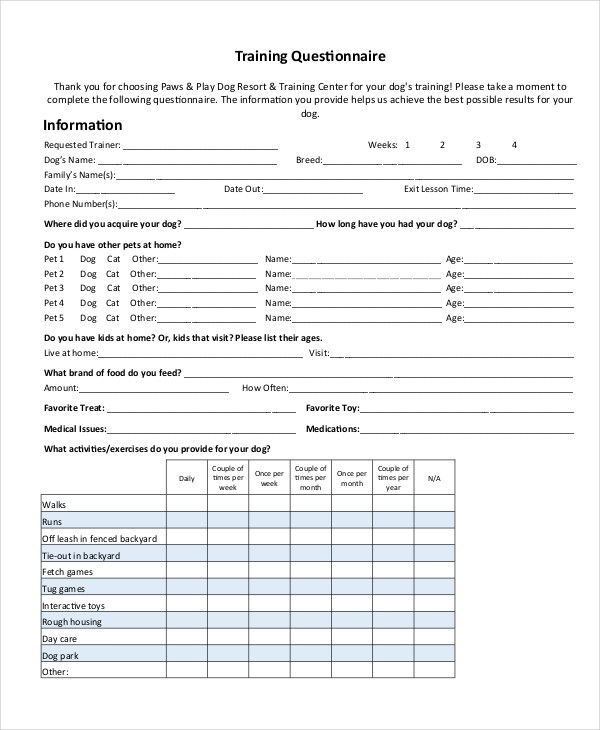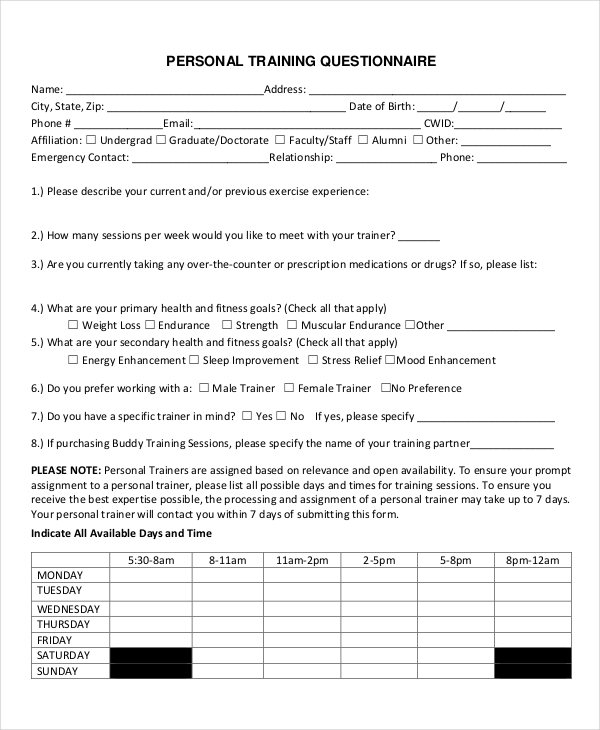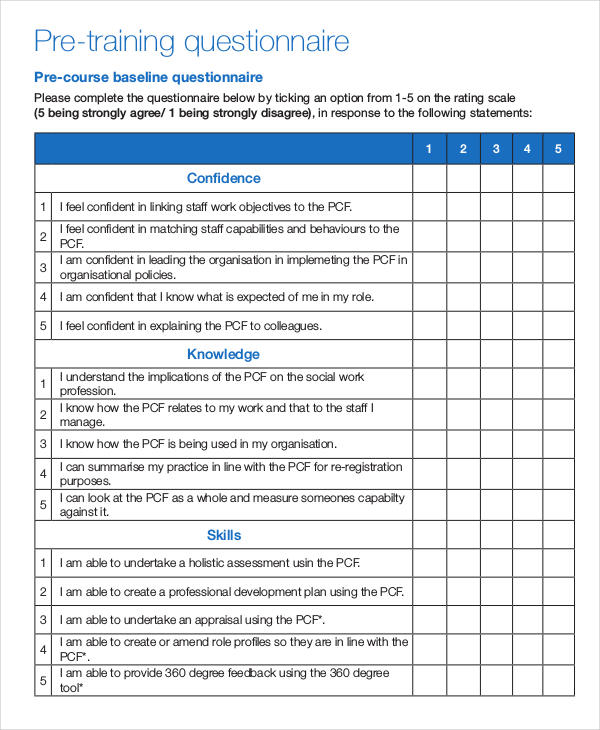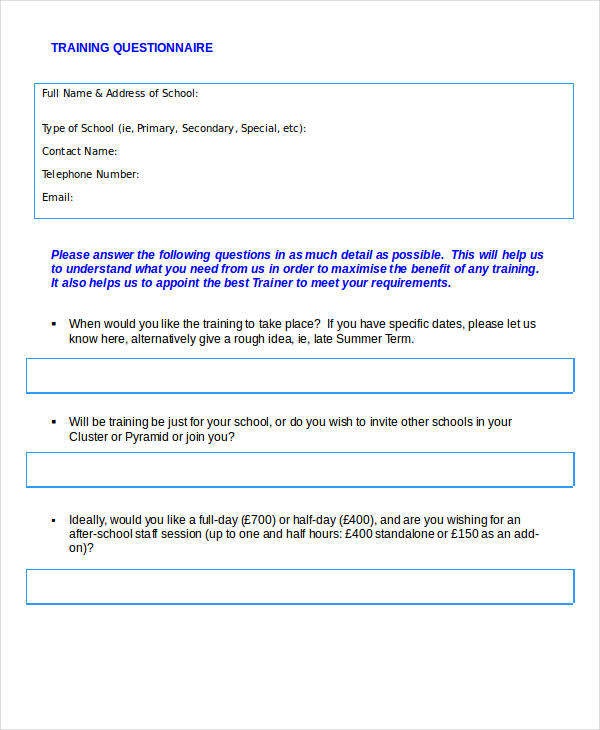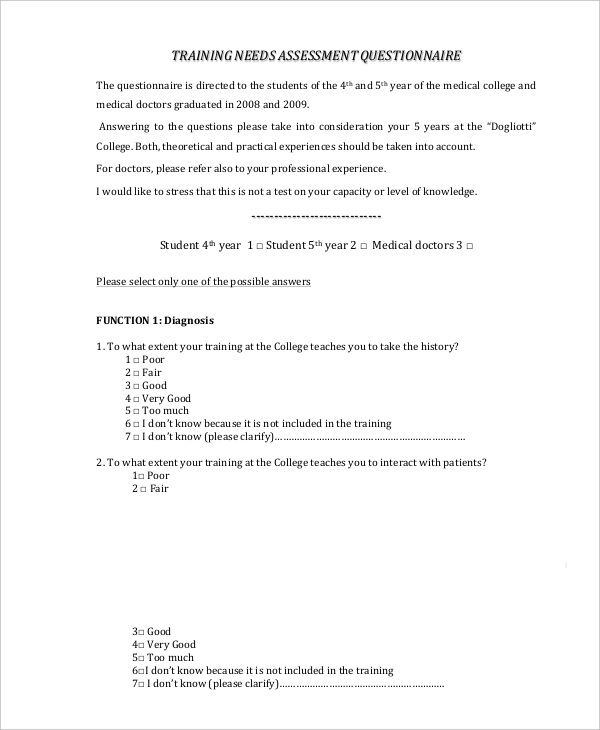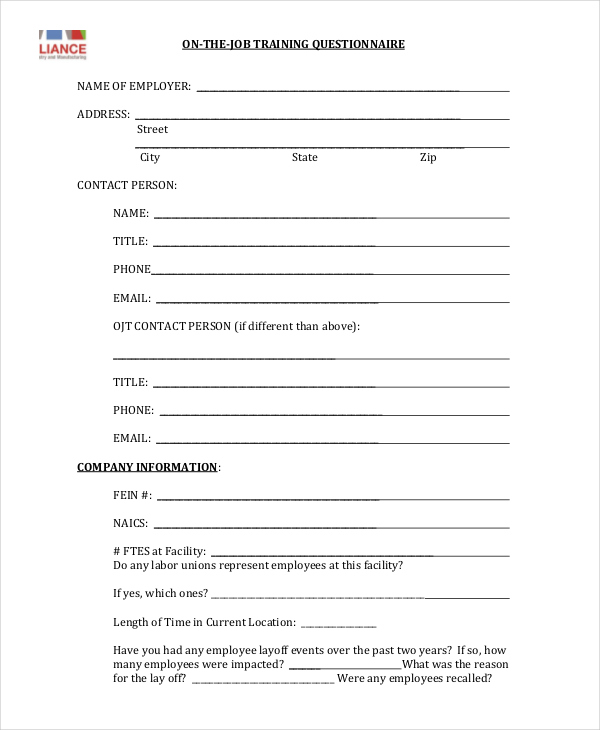8+ Training Questionnaire Examples
Most companies or an organization conducts training for their new or old employee to teach them and to make them familiarize with the new process. However, the problems they usually encounter is that don’t know whether the training they provided was effective, resulting in a possible loss of investment and risk in their financial statement. That’s why training questionnaire is very important.
Developing a questionnaire examples for training conducted is the best way to determine the effectiveness and the efficiency of the training. It also determines the value of a specific tool used in the training and the list of programs and activities included in the training. The result of this questionnaire can be used to improve the training of the company.
Training Effectiveness Questionnaire
Employee Training Evaluation
Training Evaluation Questionnaire
Sample Training Questionnaire
Personal Training
What Is a Training Questionnaire?
A training questionnaire is a list of questions that examines a training program conducted by a company or an organization that can provide valuable insight into the effectiveness of the training.
This questionnaire determines whether or not the training has paid off and had a desired effect to the trainees. The training questionnaires ensure that the trainees are able to put into practice the learnings they get from a specific training into their respective workplace, or to their common work routines.
To give yourself full understanding about training questionnaire, you can browse our training questionnaires examples in Word and other formats here.
How to Prepare a Training Questionnaire
Just like interview questionnaire examples, a training questionnaire also needs a thorough preparation in order for it become effective. Here’s how to prepare a training questionnaire.
- Know what is the environment of the training. Whether it is a business environment or school environment.
- Identify who are the trainees. If it is a regular employee or professional ones.
- Learn what training is being conducted. So that you can properly deliberate your questions.
- Determine what is the end goal of the training. This is for you to formulate significant and relevant questions that relate to the training.
Pre-Training Questionnaire
School Training Questionnaire
Training Needs Assessment Questionnaire
On-Job Training Questionnaire
Benefits of a Training Questionnaire
Training questionnaires are designed to know whether or not the training conducted has effectively met the trainee’s needs and objectives and to determine what knowledge and writing skills acquired by the trainees through the whole process of training. These are the benefits of a training questionnaire.
- Training questionnaires measure the response of the trainees. The training questionnaires will give highlight to the trainee’s feedback. Whether they enjoyed the training, their personal statements on how the trainer handles the whole training or if the training was appropriate for them.
- It determines the learning and knowledge acquired by the trainees. As mentioned above, the training questionnaire is a huge opportunity for the company to know what areas of the training provides more learning and knowledge to the trainees. And by there, they know what and where to improve.
- It measures the effectiveness of the training. The questionnaire only focuses on what, where, and how the training works for the trainee.
- It provides impact to the business’s improvement. The results of a training questionnaire will be used to the development of the business and improving the business strategic plan.
Want to know more about the benefits of this questionnaire? Feel free to check out our training questionnaire examples in PDF and Word provided here.




